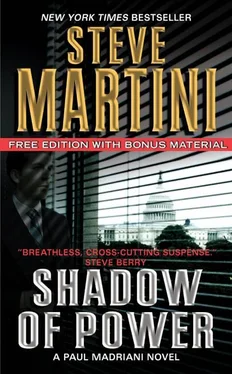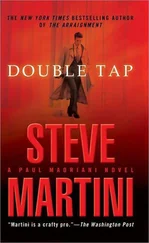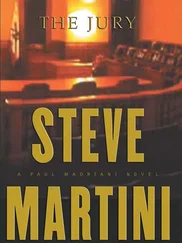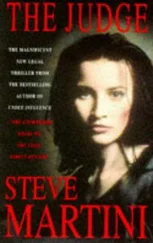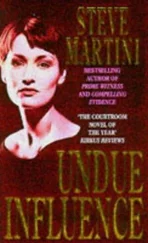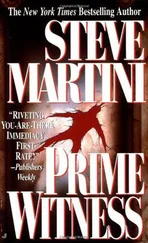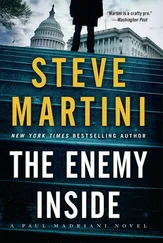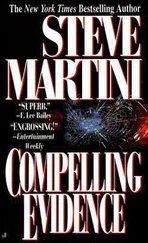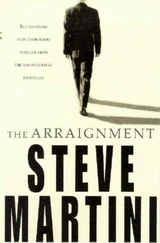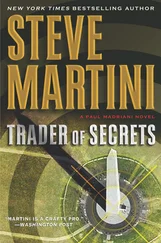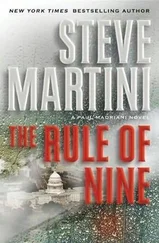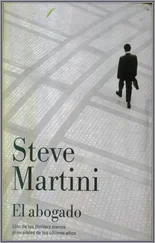“Based on what you can see in that photograph, the reflection captured off the television screen shows one of your technicians standing behind the chair where the victim was murdered, is that right?”
“That’s what I said.”
“Detective Detrick, based on what you’ve seen in these two photographs, if you were sitting in that chair, looking at that dark television screen, and someone approached you from behind, wouldn’t you see his reflection in the screen?”
“I suppose if I was looking directly at the screen at the time.”
“Even if you were doing something else-say, reading, looking at some information on paper while seated in that chair-and someone approached you from behind, isn’t it likely that the reflection of the person’s motion on that screen would draw your attention?”
“I don’t know. Can’t say. Too many variables,” he hedges.
“Like what?”
“Well, like how focused his concentration was on whatever he was doing. Whether he was looking down at the time, maybe reading something in his lap. Maybe the victim’s peripheral vision wasn’t that keen,” he says. “Maybe he was snoozing at the time.” Detrick smiles just a little.
“Let’s suppose that he wasn’t snoozing. Let’s suppose that instead the victim was reading, looking through some papers. By the way, while we’re on the point, besides blood, did you or your officers collect anything else from the area directly around and under the victim’s body?”
“Yes. Some typed pages,” he says.
“Do you remember whether you or your officers examined any of those pages as to their content?”
“We did.”
“And what did you determine with regard to those pages?”
“The victim appeared to be going over notes, apparently in preparation for a television appearance that was scheduled for later that day.”
“Ah, so let’s assume that the victim wasn’t sleeping, that instead he was reading these papers at the time he was killed. Don’t you think if he was doing that and someone approached him from behind, the victim might see that movement in the television screen?”
“As I said earlier, I really can’t say. The answer would depend on too many things that I don’t know.”
“You mean, like the intensity of the victim’s concentration, his peripheral vision…?”
“That and whether he was actually in a position to glimpse the screen at the particular moment, whether the set was on or off…”
“But you said earlier that the set was turned off when you arrived and that it was off when the first officers arrived on the scene, did you not?”
“That’s correct. But that doesn’t necessarily mean that it was off at the time the victim was killed.”
“I see. So you’re assuming that after the murder someone turned the television off?”
“I’m not assuming anything,” he says. “I’m just saying it’s a possibility.”
“Well, let’s see. Who could have turned the set off? Certainly not the victim.”
“No.”
“Perhaps the maid who found the body? Did you or any of your officers ask her if perhaps she tiptoed around all that blood, found the remote, and turned the television off before she reported the body?”
“No.”
“Well, maybe she came back after reporting the body and turned the set off then. Did you ask her that?”
“No.” Eyes that had laugh lines at the outer edges a few seconds ago are now two little slits projecting death rays from the witness stand.
“Ah, I see. You think the murderer, whoever killed Professor Scarborough, beat him to death, spraying blood all over the ceiling and walls, carried a tray with food into the room from out in the hall, laid it all out on a table, and then, before he panicked and ran from the scene, the perpetrator took the time to find the remote and turn off the television set?”
Two of the jurors are now laughing.
“Anything’s possible,” says Detrick. “What I’m saying is that I simply don’t know.”
“Well, maybe we should just stick with what we do know, that the television set was turned off when the first officers arrived at the scene. That much we know, right?”
“Right,” he says.
“By the way, Detective, do you know where the remote device for the television was located that morning as your officers and technicians processed the scene?”
“I’m sorry. I don’t.”
I produce one of the photographs already in evidence. There is a clear shot of the handheld remote on a shelf against the wall, just off to the left side of the television.
“Yes, I see it,” he says.
“So if the set was on at the time of the murder, and for some reason the killer wanted to turn it off, he would have to step over or around the body and either turn it off on the set itself or reach over and get the remote. In either case he’d have to walk through the field of blood on the carpet to do it, is that correct? Or do you see some other way?”
“Not unless he could fly,” says Detrick. “That’s the only way.”
“And in the photograph do you see any indications or signs of bloody footprints directly in front of the television or the shelf where the remote is located?” I show him the photograph again. “Go ahead, take a look.”
He puts his glasses on again and looks closely at the picture. “Not that I can see in the photograph.”
“So do you think it’s possible that we can safely conclude that the television was off at the time of the murder?”
“Yeah. Probably.”
“And if that was the condition of the set at the time of the murder, that it was turned off, a dark screen on that set would have provided anyone sitting in the chair where the victim was seated and who looked at that screen with a pretty good image by way of reflection of anything moving around him or behind him, is that not true?”
“If he was looking at the screen, yes.”
“And if the television was off, it wasn’t making any sound either, was it?”
“I assume not.”
“Well, did you hear any music or television dialogue coming from that television when you arrived at the scene?”
“No.”
“So it wasn’t putting out any sound?”
“No.”
“So in addition to providing a good visual cue, a warning by way of reflection in the screen, the fact that the television was off meant there was no noise to mask the sounds of any entry or footsteps approaching from behind, isn’t that true?”
“That’s true.”
“Detective Detrick, in your capacity as an expert in crime-scene reconstruction, let me pose a hypothetical question. If the victim in this case, Professor Scarborough, was intensely focused, working on something, papers of some kind, and someone came to the door, someone he knew and trusted, is it not possible that he might get up, go to the door, open it, let that person in, and immediately return to the chair where he was working before this other person even entered the room?”
He thinks about this for a moment, all the little facets, and then tries to slip away. “I would expect that someone who opened the door and allowed a guest in would welcome that guest, show them in, and then close the door behind them.”
“Yes, but remember, in my hypothetical the victim was very busy working, studying some papers. Assume he was pressed for time, in a hurry. And the person at the door was someone he was on a casual basis with, someone he trusted…”
“It’s possible, I suppose, although…” He thinks of something else. “In that case the victim would have seen the murder weapon, the hammer,” he says. “I assume it would be in the assailant’s hand when the victim opened the door.”
“Let’s assume that the hammer was concealed under a garment or in a bag or a briefcase. Now, isn’t the situation that I posed a possibility?”
Читать дальше
